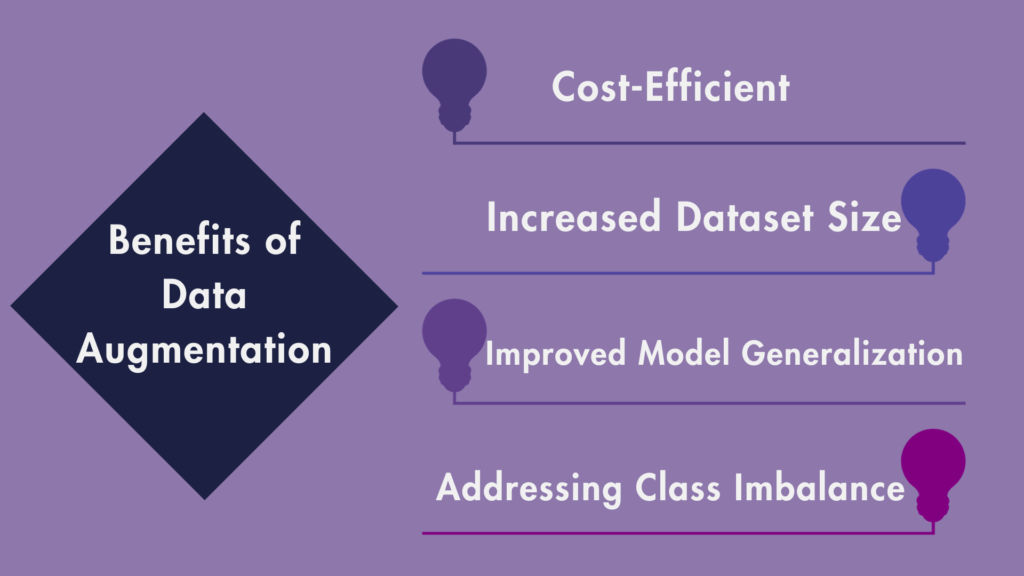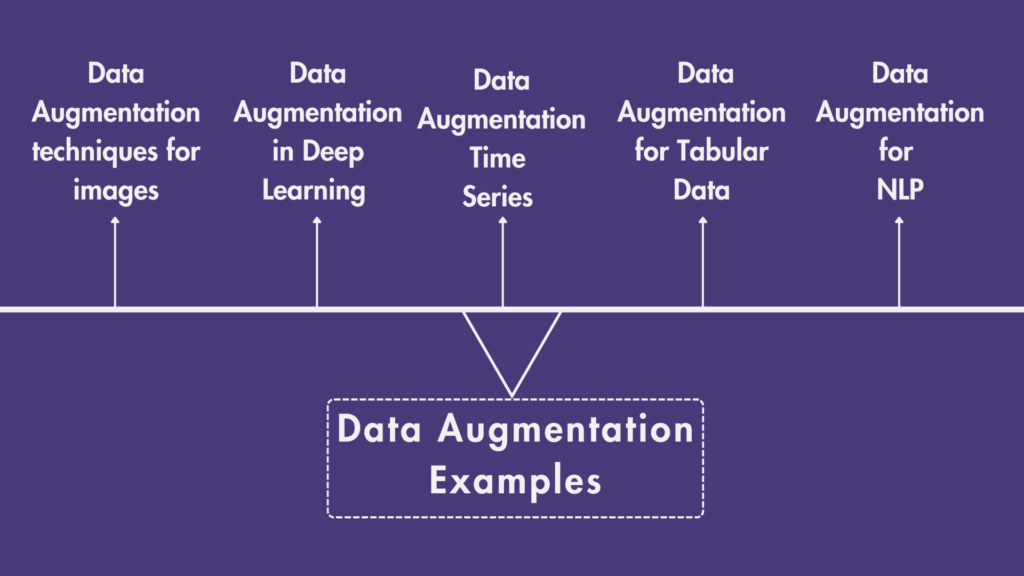Data augmentation is a crucial technique in modern data science and machine learning. It facilitates the enhancement of dataset diversity and quality, resulting in improved model generalization and performance. This technique involves generating additional training samples from existing data by applying various transformations, effectively enlarging the training dataset without the need for more labeled examples. It is a critical factor across various domains like tabular data, natural language processing (NLP), deep learning, and specialized areas such as time series data. In this article, we’ll highlight its importance, provide examples, analyze its applications in diverse domains, and investigate how AI contributes to enhance it.
Data Augmentation
It is a powerful technique used to mitigate overfitting, especially when working with limited datasets. The fundamental concept is to generate extra data points by applying various transformations to the existing dataset. These transformations can include rotations, translations, scaling, zooming, flips, and more, depending on the data type and the problem at hand. For example, in image data, augmentation may involve rotation or cropping, while in NLP, it might encompass synonym replacement or text paraphrasing.
Benefits of Data Augmentation

Increased Dataset Size:
Augmentation expands the training dataset, offering a broader and more diverse set of examples for the model to learn effectively.
Improved Model Generalization:
Diverse data exposure boosts model resilience, curbing overfitting and enhancing generalization to unseen data.
Cost-Efficient:
It creates more dataset samples without collecting new data, saving valuable time and resources by using existing data effectively.
Addressing Class Imbalance:
Augmentation balances class distribution in datasets, crucial for addressing imbalance issues often present in the data.
Data Augmentation Examples

1. Data Augmentation techniques for images:
The image processing involves a variety of techniques applied to the images:
- Rotating the image by a specific degree.
- Horizontally or vertically flipping the image.
- Zooming in or out of the image.
- Cropping a subregion of the image. Making Color adjustments by changing the color balance, brightness, or contrast.
By applying these transformations, the dataset is significantly expanded, aiding in training robust computer vision models.
2. Data Augmentation for NLP
In NLP, data augmentation is crucial for sentiment analysis, language translation, and question-answering tasks. Augmenting the training data with paraphrased sentences, synonymous words, or even translated versions of the text helps the model generate more nuanced responses, improving language understanding and generation.
Data augmentation for NLP often revolves around text-based transformations:
Synonym Replacement:
Replacing words in the sentence with their synonyms while maintaining the sentence’s meaning.
Random Insertion/Deletion:
Introducing or removing words randomly in the sentence.
Sentence Swapping:
Reordering the words or phrases in a sentence.
These augmentations diversify the linguistic patterns present in the dataset, leading to improved language understanding models.
3. Data Augmentation for Tabular Data
Data augmentation for tabular data holds immense significance in domains such as finance, where predicting market trends necessitates a robust model trained on diverse and extensive datasets. By applying augmentation techniques to existing financial datasets, the resulting model can better adapt to varying market conditions, ultimately enhancing prediction accuracy.
Tabular data augmentation involves generating synthetic data points for training machine learning models. Techniques include:
Adding Noise:
Introducing random noise to numerical features.
Duplication:
Duplicating rows with minor modifications.
Interpolation:
Creating new data points by interpolating between existing ones.
This augmentation enriches the dataset, making it more comprehensive for training predictive models.
4. Data Augmentation Time Series
Time series data is prevalent in fields like healthcare, finance, and environmental monitoring. Employing data augmentation in time series analysis enhances predictive models for disease outbreak prediction, stock price forecasting, climate trend prediction, and more. The diversified data resulting from augmentation contributes to more accurate and robust forecasting models.
In the context of time series it may involve various operations like:
Time Warping:
Warping the time axis, is useful for temporal alignment.
Jittering:
Adding random noise to the time series data.
Amplitude Scaling:
Scaling the amplitude of the data points.
These augmentations are vital for training accurate models for forecasting, anomaly detection, and trend analysis in time series data.
5. Data Augmentation in Deep Learning
Tailoring augmentation techniques to suit the specific architecture and task is a key practice within deep learning models. For example, in image recognition CNNs (Convolutional Neural Networks), augmentations such as rotation, translation, and scaling are frequently applied to enhance the training data. On the other hand, when dealing with sequence data in RNNs (Recurrent Neural Networks), augmentations like time warping and jittering are more appropriate. This adaptive augmentation strategy ensures it aligns precisely with the requirements and characteristics of the given deep learning model in use.
The Role of AI in Data Augmentation
Artificial intelligence (AI) plays a pivotal role in advancing data augmentation techniques. AI algorithms can intelligently design and apply augmentations based on the data’s nature and the desired outcomes. Machine learning models can learn which augmentations are most effective for a specific task and dataset, optimizing the augmentation process. AI-driven data augmentation has the potential to revolutionize the field, making the generation of diverse and high-quality data even more efficient and effective.
Road Ahead
Looking ahead, the fusion of artificial intelligence (AI) and data augmentation promises a new era of innovation and efficiency. As AI continues to advance, we anticipate increasingly sophisticated algorithms that understand intricate data patterns and domain-specific requirements. These AI-driven advancements will lead to highly tailored and contextually appropriate augmentations, further boosting model performance.
Integration with AI-powered generative models, such as Generative Adversarial Networks (GANs), holds immense potential. GANs can create synthetic data that closely mimics real-world examples, expanding its scope. This fusion will enhance the generation of diverse, realistic, and large-scale datasets, crucial for training robust models.
Moreover, continual research and development in AI will pave the way for automated and adaptive data augmentation pipelines. These pipelines will intelligently choose and apply augmentations in real time, dynamically responding to the changing nature and requirements of the incoming data.
In conclusion, data augmentation stands as an indispensable tool in the repertoire of a data scientist. Across various domains such as image data, natural language processing (NLP), tabular data, and time series, its strategic application breathes versatility into machine learning models. By amplifying the dataset with augmented instances, we equip models with a broader exposure to variations and nuances present in real-world data. This exposure fosters robustness, mitigates overfitting, and ultimately elevates the model’s ability to extrapolate knowledge onto unseen data. As we traverse the continually changing domain of data science and machine learning, leveraging data augmentation’s potential becomes crucial for extending model capabilities and attaining enhanced accuracy and dependability. With the evolution and increasing accessibility of AI technologies, we anticipate a future where data augmentation seamlessly integrates into model training processes. This integration stands poised to revolutionize diverse domains and spur progress in artificial intelligence.

